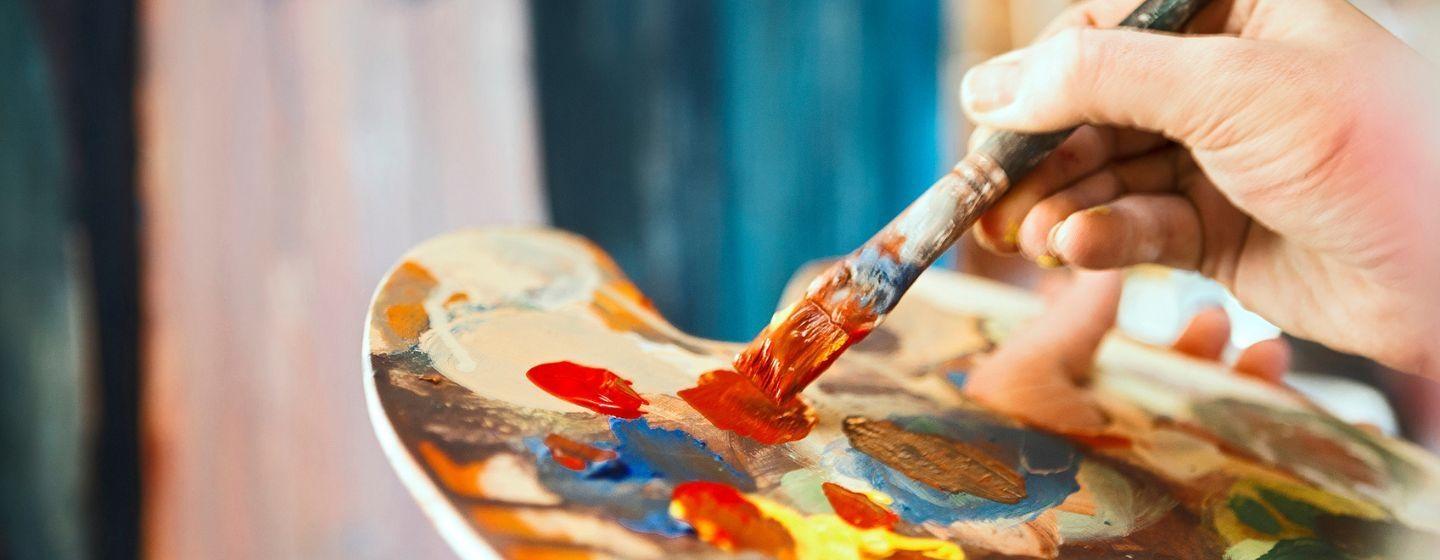Could Laser Imaging Help Us Preserve At-Risk Art?


Van Gogh, Matisse, Monet and Picasso are some of our most beloved painters. What else do they have in common? They all loved to brush their canvases with bright yellow colors made from the chemical compound cadmium sulfide. And they weren’t alone.
“So many painters really loved this pigment,” said Yue Zhou, in a story on the Duke Today website. Zhou is a graduate student at Duke University working with Professor Warren S. Warren to study pigments.
However, time takes a toll on paintings. The passage of time exposes artwork to light, moisture, dust and other elements of nature, which can make pigments fade and discolor.
Take the spectacular sunset in The Scream, the famous painting by Edvard Munch. It turns out portions of the sky that were once yellow are now off-white. In fact, if you compare many impressionist paintings hanging in museums today with photos taken 50 to 60 years ago, you’ll notice many of them are losing their bright yellow hues.
Sadly, those color losses can’t be reversed. But in a new study, Duke researchers demonstrate that a laser microscopy technique could offer a way to identify the first signs of color change before they’re visible to the naked eye.
Museum conservators already have a way to study the pigments used in paintings as well as how much they’ve broken down. It involves scraping off a tiny chip of paint with a scalpel to analyze its composition. Think surgery for art.
“That method can damage the piece and limits the area to be studied,” said Zhou.
Rather than scraping off a tiny bit of paint for analysis, the Duke team used a laser to examine layers of paint and detect chemical changes that mark the start of a pigment’s decay.
It’s called pump-probe microscopy. The device uses ultrafast pulses of harmless visible or near-infrared light. And I do mean ultrafast; the pulses last less than a trillionth of a second. The device measures how the pulses interact with pigments in the paint. The signal, or the reflections of light detected from that interaction, can then be used as a chemical fingerprint to identify which compounds are present.
The technology can also be used at different locations on the artwork as well as different depths of paint. Researchers can create 3D maps of certain pigments and monitor what’s happening at scales as small as a hundredth of a millimeter.
To test the laser, Zhou mixed powdered cadmium sulfide pigment with linseed oil in a lab and then brushed it on microscope slides to dry. Yep, that’s the mix for that famous yellow color.
Some samples were left in a dark, dry environment, which is perfect for paintings because there’s no moisture or light damage. Additional samples were placed in a special chamber and exposed to light and high humidity—not good for paintings.
After four weeks in the chamber, the samples were already looking the worse for wear. Bright yellows had faded to lighter shades of yellow. After four weeks, Zhou said the signal decreased by more than 80%.
But even by week one, although damage wasn’t visible to the naked eye, Zhou said obvious signs of decay were discovered by the pump-probe laser. The device was already detecting a decreased signal from the cadmium sulfide.
The signal loss is because of a chemical change in the pigment. Moisture triggers the change in cadmium sulfide, which is yellow, into cadmium sulfate, which is white. That’s why dull yellow is seen in so many masterpieces.
The technology was first developed to analyze pigments in human tissue to inspect moles for signs of cancer.
Ironically, there are a lot of similarities between probing moles and artwork with lasers, and the senior coauthors of the study, Martin Fischer and Warren S. Warren, realized their discovery could be used in art conservation.
While the technology can spot problems with a painting in a way that doesn’t involve damaging the artwork, most museums can’t afford the testing systems. There’s also the challenge of moving large and delicate pieces of art. Researchers hope they can develop a cheaper and more portable version of the system.
The same pump-probe laser system is used by Duke researchers to identify forgeries. To see how the system works, watch this Sci NC story from 2014.